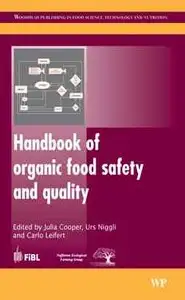
الكاتب: Multiple References
Nonpathogenic microorganisms are associated with all higher forms of life on earth. These microbes in many instances have a saprophytic or commensal relationship with the host animal and research with gnotobiotic animals has shown that, in such cases, the animals can live without associated microbes. In the herbivorous “animals” (and this term includes insects), though. a true symbiotic relationship between host and microbe exists and the microorganisms are essential to the life of the animal. This occurs because the structural polysaccharides of plants cannot be degraded by animal digestive processes and the herbivore relies on microbes in the gut to convert these polysaccharides to products which it can utilize for energy and growth. Conditions suitable for microbial growth, particularly with respect to residence times of digesta, need to be provided in the herbivorous digestive tract. These are obtained in some cases by an enlargement of the large intestine, where microbial action takes place after the normal gastric digestive system. In the ruminant herbivores and some related animals, a separate organ has evolved in which the microbial action takes place before the gastric digestion (Figure 1). Further microbial growth occurs in the cecum and large intestine, but the nutrition of the animal microbial activity here is of minor significance compared with that in the rumen. Food first enters the rumen-reticulum compartment. Although there are some differences in the digesta in the rumen and reticulum sections of the organ, the contents are intermixed and, as will be seen later, sampling methods are often imprecise in the location of the sampling point, so the whole organ is generally treated as one and referred to as the “rumen”. This is large in relation to body size (approximately 5 to 10 P in sheep and 100 to 150P in cattle) and, because passage from the rumen is selective by particle size, while the detention time for liquids is some 10 to 24 hr, large food particles can be held in the rumen for 2 or 3 days. Sufficient time is thus available for slow microbial degradation of resistant plant fibers. Flow of digesta through the rumen is mediated partly by water drunk by the animal, but more by a copious production of saliva, the flow of which is usually much greater than the flow of drinking water. The saliva contains salts, including bicarbonates and phosphates which, with ammonia, buffer the rumen fluid against the fermentation acids to a pH of about 6.5, which permits growth of the microorganisms. Heat of fermentation of food and, to a greater extent heat from the normal aerobic tissue metabolism of the animal, keeps the rumen contents near 39”C, and the contents are mixed by muscular contractions and relaxations of the rumen wall.
تحميل كتاب Microbial Ecology and Activities in the Rumen Part I ، كتاب Microbial Ecology and Activities in the Rumen Part I pdf للتحميل المجاني ، تحميل كتب pdf، وكتب عربية للتحميل، تحميل روايات عربية ، تحميل روايات عالمية ، روايات pdf ، تحميل كتب Multiple References pdf ، تحميل جميع كتب ومؤلفات Multiple References ،و اقرأ مقالات مفيدة ، تذكر كل هذا وأكثر على مكتبة الكتب.





هذا المحتوى مخفي
جميع خدماتنا مجانية .. يرجى دعمنا والمشاركة علي إحدى مواقع التواصل الإجتماعي
أو انتظر 10 ثانية لظهور المحتوى